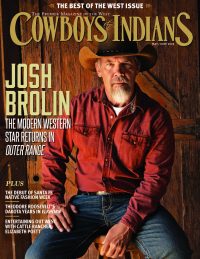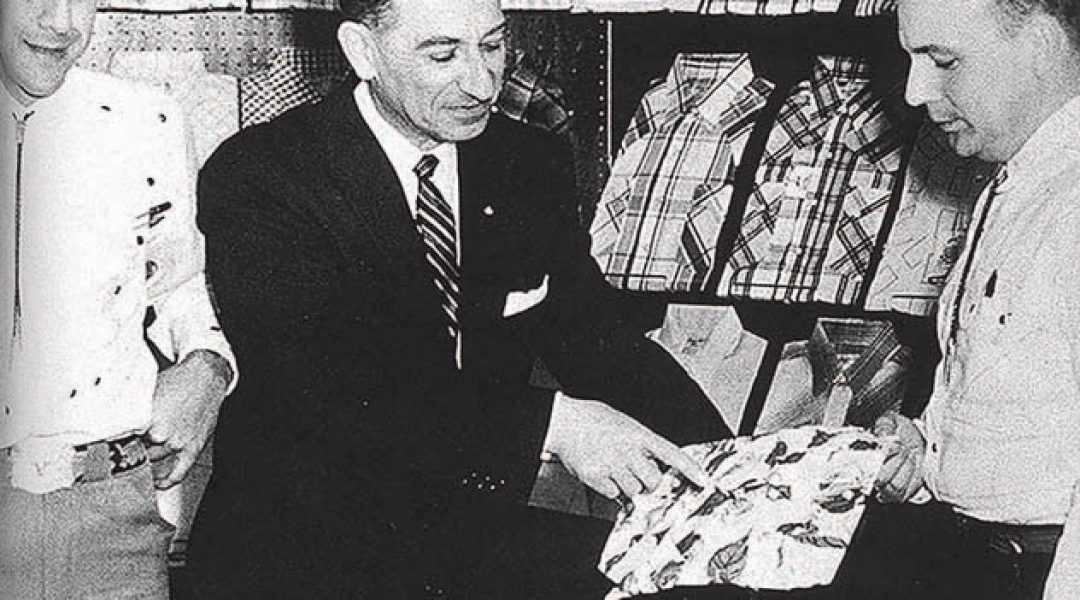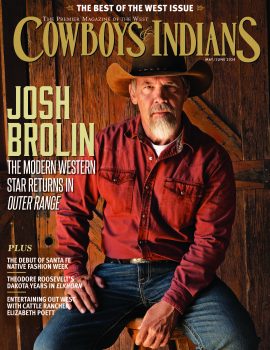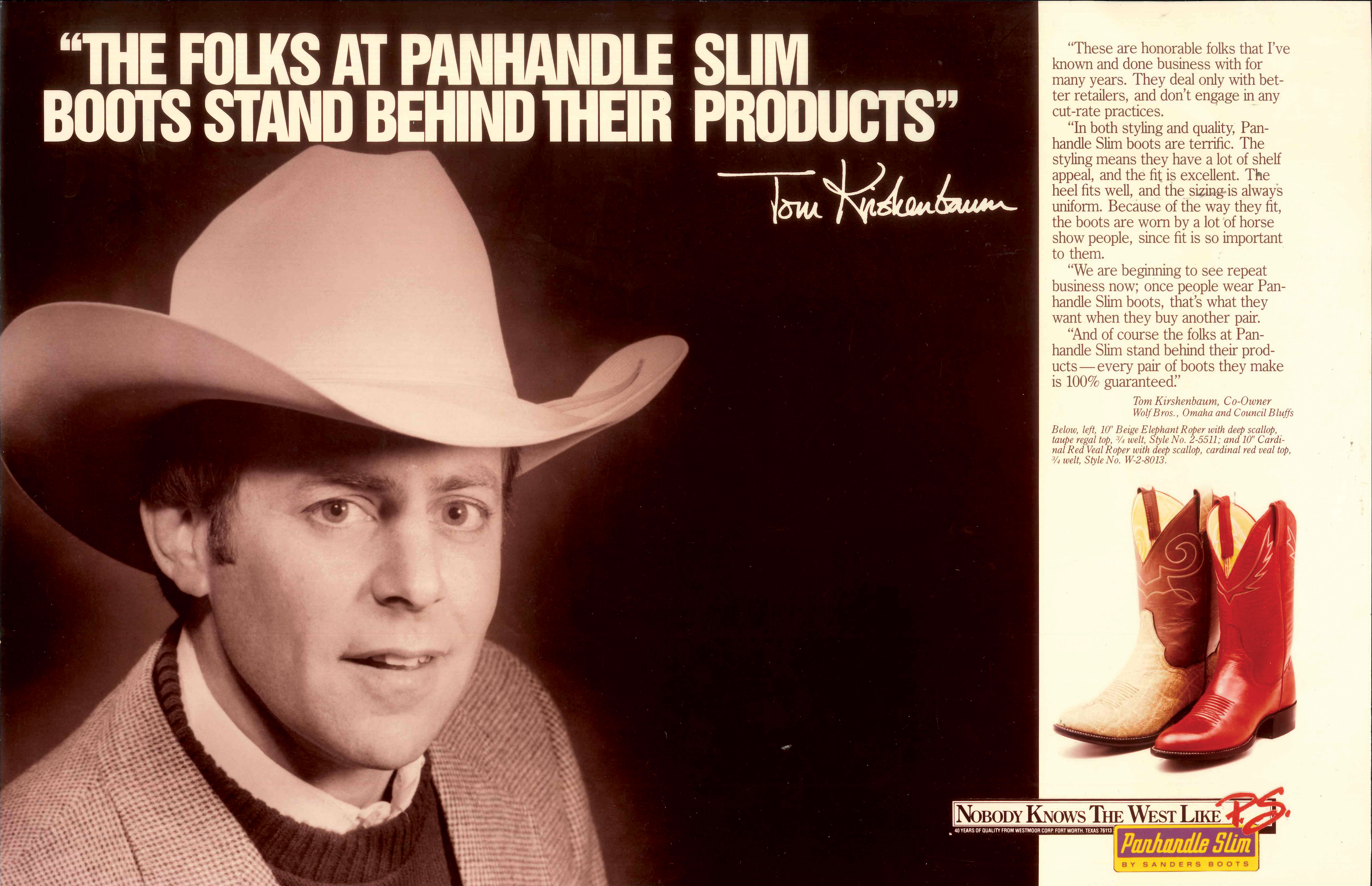
As the beloved brand marks a milestone, we look back at Panhandle Western Wear’s humble beginnings. It’s a modern-day Horatio Alger story as all-American as the pearl-snap shirt.
In the 19th century, Horatio Alger Jr. penned popular fiction novels about young, hardworking lads who rose from humble beginnings to middle-class security through their courage, determination, honesty, and perseverance. Nearly a half-century after his death, a true-life Horatio Alger story began to emerge: that of the Hochster lads who founded Westmoor Manufacturing.
Panhandle Western Wear stands as one of the most beloved and well-known brands the American cowboy world has ever known. Few, however, may know that it’s been a family-held business for 70 years, ever since its inception in 1946 as Westmoor Manufacturing. Fewer still know the dramatic true-life tale of how this iconic brand came to be and of the true grit of its founders.
Imagine yourself, if you will, as a teenage boy in 1936 Nazi Germany: Persecution of Jews had become a stated Nazi policy in 1933, and Adolf Hitler had become Führer in 1934.
Under Hitler’s dictatorial rule, the pace of persecution escalated quickly, and by 1936 Jews were forbidden to hold any professional jobs — effectively barring them from earning a living in such fields as education, industry, medicine, and politics.
The Hochster family was determined to escape Nazi Germany while they still could, and, fortunately, they did. Sixteen-year-old Martin and his 14-year-old brother, Ernest, made it to safe harbor on U.S. shores in 1936 along with their parents, Sol and Meta, and Meta’s mother, Amalie Bloch.
Good thing, as by 1938, the year of the Third Reich’s infamous Kristallnacht, 125,000 applicants would queue up outside U.S. consulates vying for 27,000 visas. A year later, the number of applicants would swell to more than 300,000 under the same quota — merely foreshadowing the horrors to ensue. Even those fortunate enough to obtain a visa to immigrate to the United States would endure the wrenching heartbreak of leaving loved ones behind. The $188 cost of passage to America, adjusted for inflation, would be $3,222 per person today — a darned-near-prohibitive fee when you’re barred from all professional fields.
Once in New York, Martin took a job selling ladies’ apparel, and Ernest found work at Excello, a men’s shirt company, as assistant production manager. Then in 1946, the brothers moved to Minnesota.
Shirt Tales
The Hochsters’ adopted city of Minneapolis and its sister city, St. Paul, straddle the Mississippi River. At the time, flour mills and sawmills dotted the Twin Cities, which brought an influx of farmers — many of them German immigrants and their descendants — to town to mill and ship their grain. Loggers came as well, hauling lumber from northern Minnesota’s vast virgin forests to the sawmills.
With the production skills Ernest accrued at Excello, Martin’s freshly honed sales experience, and the knowledge that Midwestern farmers and loggers would be in need of sturdy work shirts, the brothers convinced investors to back them in launching a men’s shirt company. They began production in 1946, naming the company Westmoor and focusing the bulk of their business on conventional, well-made casual apparel that would have broad appeal in the rural market. Westmoor also seized on the emerging category of sports shirts and developed a few offshoot lines, such as House of Westmoor and Westmoor Sportswear.
Meanwhile, over in Denver, Jack A. Weil was creating what would become an inextinguishable Western trend by putting snap closures, instead of buttons, on shirts. Cowboys loved ’em: If your shirt got caught on a branch, it might pop open but it wouldn’t throttle you or get torn up as it would with button closures. Plus, you could snap and unsnap a shirt one-handed.
Around 1948 or 1949, Westmoor introduced its first Western shirt, The Gambler, with a three-button cuff and a long tail that would stay tucked in while the rider was mounted.
The Gambler sold well across the South and Southwest, but Westmoor’s salesmen told the brothers it would sell even better with snaps. Ernest, not willing to sacrifice an existing market for a new one, decided to do shirts both ways and give his customers a choice. Made in wool and rayon gabardine blends, The Gambler hit the bull’s-eye with the Westernwear customer.
Still, the burgeoning new line needed an evocative Wild West personality, something with a more authentic Western ring to it than simply affixing “Westmoor” inside the collar. Ernest called salesman Ed Gassman for suggestions, and Gassman, who happened to be in Amarillo, Texas, at the time calling on an account, coined the name Panhandle Slim in tribute to the area’s rangy cowboys with whom he did business.
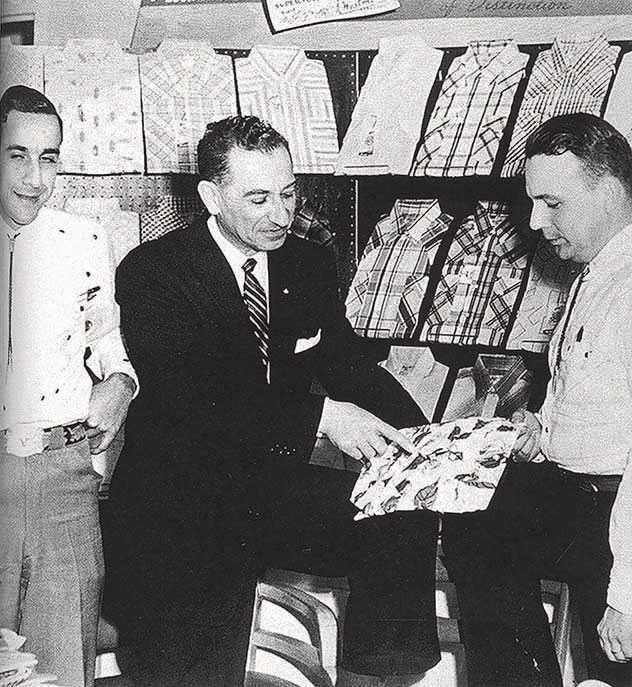
The Cowboy Craze
Ernest moved the company to Nebraska in the 1950s and brought his teenage son, Jeff, onboard in the 1960s. Then in 1975 the Hochsters decided to uproot once more and relocate the whole operation to Fort Worth, Texas. The brand-new facility on the outskirts of Cowtown allowed the company to be closer to its customer base and improve manufacturing quality and design, and Panhandle Slim enjoyed robust growth.
Then came 1980, when a movie came out starring John Travolta and Debra Winger as characters Bud and Sissy, who each rode a Houston dancehall’s mechanical bull in a rather suggestive way. The movie’s name? Urban Cowboy.
The Urban Cowboy craze precipitated a torrent of Westernwear customers the likes of which manufacturers had never seen. “A lot of imitation Western shirts flooded the department store market,” Jeff says. “We pretty much stuck with our core customers. Those Western stores did really well, and so did we, but we had already identified the Urban Cowboy effect as a fad, so we didn’t ramp up production as so many other manufacturers did.”
Many of the Westernwear manufacturers that increased production to feed the Urban Cowboy frenzy didn’t survive: When the frenetic buying trend shuddered and stopped, they were bucked off the thrill ride and bankrupted.
Westmoor survived — and thrived — during that time frame. By the end of the decade, Jeff had taken over as company president. His brother Lenny, who began working at Westmoor in the 1980s, would become vice-president when their father retired.
With Westmoor still in its first decade in Fort Worth, the family and the company were dealt a terrible blow: Martin underwent coronary bypass surgery and a short time later, in 1996, died in a traffic accident when his car veered off the road, rolling several times. Doctors believed Martin suffered a heart attack and lost control of the vehicle.
The year prior, the Fort Worth Star-Telegram had shared the story of this remarkable man with its readers, noting that Martin applied for U.S. citizenship in 1942 and was drafted in 1943. In that interview, Martin said, “By the time I went into the service, I was Americanized enough to know I wanted to do my duty for the country.” He had served as an interpreter for American troops and was present when some of the German concentration camps were liberated, which made a lasting impression upon him.
He also served as a reserve deputy in Fort Worth, logging as many as 80 hours a month, and made sure that an American flag stood on every veteran’s grave in Fort Worth’s four Jewish cemeteries. One stands on his today, a reminder of a thankful patriot who fully embraced his adopted nation.
Reaching for More
As Westmoor Manufacturing entered the ’90s, a renaissance of sorts took place in country music. Genre-bending new artists began branching out into more rock ’n’ roll and pop sounds in efforts to “cross over” and gain market share by reaching out to new audiences without alienating the core. Stars such as Tim McGraw, Faith Hill, Alan Jackson, and Brooks & Dunn emerged.
Seeing an opportunity to do the same with Western shirts, Panhandle Slim signed Brooks & Dunn as celebrity endorsers, and created the Brooks & Dunn Collection around them. And when Brooks & Dunn scored a Grammy in 1997 for their chart-topping hit “My Maria,” talk about setting the collection en fuego: Guys simply could not get enough of the sexy Brooks & Dunn “Flame” shirt. Other celebs soon followed suit, signing on to promote Panhandle labels like the popular fashion line Rock & Roll Denim in the country music spotlight and the rodeo arena. Endorsements continue to remain a staple for the company, especially among rodeo elite such as All-Around World Champion tie-down roper Tuf Cooper, who in recent years has even collaborated with the brand to create his own line of performance wear.
Today the humble shirt factory begun by two determined immigrants is a global business, clothing top riders and selling to markets in Asia, Australia, and across Europe as well as throughout the Americas. In keeping with the Hochster tradition of constant company reinvention while staying true to the founders’ vision, Jeff’s son, Jamison — who studied at some of New York’s finest fashion houses, including Donna Karan and Perry Ellis, before joining the family business — hints at a new line, Slate, that will launch this year. “It will be a premium brand,” he says, “designed to be marketed at higher-end Western stores and boutiques.”
We can hardly wait to see what the family’s next generation has in store.
From the October 2016 issue.



